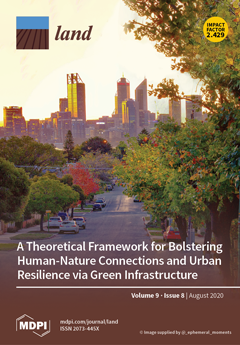Resource information
This paper presents a conceptual framework that looks at photovoltaic systems in synergy with ecosystem services. The focus is to connect business success with social and ecological progress based on the operative concept of multifunctional land use. Such an approach attempts to harmonise the needs of the industrial processes of photovoltaic systems and the ecological and social needs of the landscape context. Different from the usual design of ground photovoltaic systems in farmlands or brownfields, a new framework is proposed, combining photovoltaic panels and vegetation. A case study is considered, applying the framework to existing photovoltaic systems in the Apulia region (southern Italy). The analysis shows how the framework has, among others, the major functions of increasing solar energy production, recycling wastewater, creating raw material for biofuel, as well as providing animal habitat and mitigating air temperature. The latter is preliminarily evaluated by means of modelling simulations performed with a computational fluid dynamics and microclimate model, ENVI-met. This approach opens up a new vision of the infrastructure design of photovoltaic systems which can produce new social and economic income.


